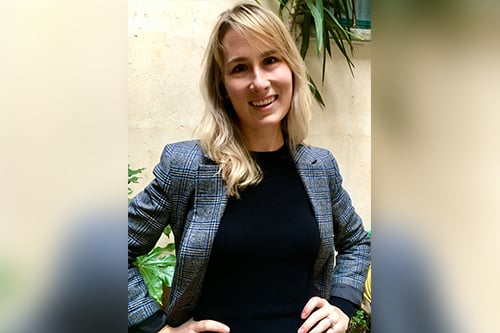

The following is an editorial by Alicja Grzadkowska, senior news editor at Insurance Business. To reach out to Alicja, email her at [email protected].
As the Black Lives Matter protests continue, with activists also turning their attention to historical figures that represent a colonial and racist past yet are immortalised in statues around the world, it's time for the insurance industry to get serious about putting a stop to any racial bias – conscious or unconscious – of its own.
The industry is not exempt from the ongoing conversation around inequality considering its own troubling historical connections to racist practices, with Lloyd’s of London recently pledging to pay compensation to black, Asian and minority ethnic (BAME) communities after its role in the slave trade was highlighted in an academic database. Other insurance companies are likewise pledging donations to anti-racist causes or already have diversity and inclusion initiatives in place to support the recruitment of diverse talent.
However, there’s still a lot of work to do in the industry to make it a truly diverse sector. The Insurance Cultural Awareness Network’s (iCAN) Kishan Mangat noted in an upcoming Insurance Business podcast that a major barrier for BAME advancement in insurance has been a lack of opportunity to move up the career ladder, which iCAN aims to address through its work. She also pointed to a lack of ethnicity data and relevant pay gap information at insurance organisations, not to mention the clear gap in representation at the senior level for BAME insurance professionals. “When you look at the stats, I think 6.7% of all senior positions in the UK are BAME, but in the insurance sector, it’s only 3.6%,” said Mangat.
Similarly, a study from Marsh and the National African American Insurance Association (NAAIA) revealed that “participants generally said they face many obstacles in the insurance industry.” As a result, many African American insurance professionals adopt “risk averse” attitudes, which can then inhibit their opportunities for advancement. One survey respondent stated, “There is still a stigma that exists that an error or problem by one African American is an indictment on the entire race; a stigma that does not apply to Caucasians when a single individual makes a mistake and it is considered an anomaly, not a representation.”
The Marsh/NAAIA study also noted some of the barriers to entry, highlighting “the absence of information about career opportunities through formal or informal networks, college career placement offices, or accessibility of African American insurance professionals.” This lack of diversity today perpetuates the lack of diversity tomorrow, demonstrating the very real need for the insurance industry to evolve its D&I practices, in part by ensuring that it’s reaching a more diverse cohort of potential applicants to start with.
The studies and figures on diversity in insurance underscore why it’s not enough to simply introduce D&I initiatives or donate to anti-racist causes and call it a day. There’s a need for a top to bottom rethinking of how diverse candidates are brought into an insurance organisation, how they’re supported throughout their time at the company, and what opportunities they get to advance within the organisation, as well as ways to measure the success of any initiatives that companies are implementing to achieve these three tasks.
There’s no room for excuses about not being diverse enough. According to Forbes, corporate leaders and managers often point to reasons like not being able to find diverse qualified candidates or hiring based on ‘quality’ and not colour. Yet, the latter is based on subjective factors and not on any scientific algorithms for determining quality, while the former has already been undercut within the insurance sector by the fact that diverse candidates are often not approached or informed about insurance-related work opportunities in the first place. Instead of picking one of the many other excuses for why diverse representation isn’t present within a company, leadership should focus on what they can do about this issue.
Organisations like the NAAIA and iCAN, as well as others like the Dive In Festival, have, for years, been putting the issues of diverse representation, advancement, and pay gaps front and centre, as well as encouraging companies in the industry to do the right thing and adopt initiatives that bring more diverse groups into the industry as well as supporting their advancement once they’re here.
There is no reason for insurance companies to not put 100% of their efforts into this work. This is an industry that seeks to protect individuals, communities, businesses, and governments from the various risks they face, and looks for ways to innovate to help these various groups protect themselves from financial loss. To actually represent the communities that they serve and to innovate better, diversity is a must-have. In fact, a Boston Consulting Group (BCG) study from 2018 determined that increasing diversity has a direct effect on companies’ bottom lines, with those that have more diverse management teams seeing 19% higher revenue because of innovation.
With the insurance industry already considering what its future looks like thanks to the coronavirus, it’s now also time to put concrete D&I strategies at the top of the agenda, evaluate what’s working and what isn’t, and be forthright about the changes that companies want to see within their own ranks.
